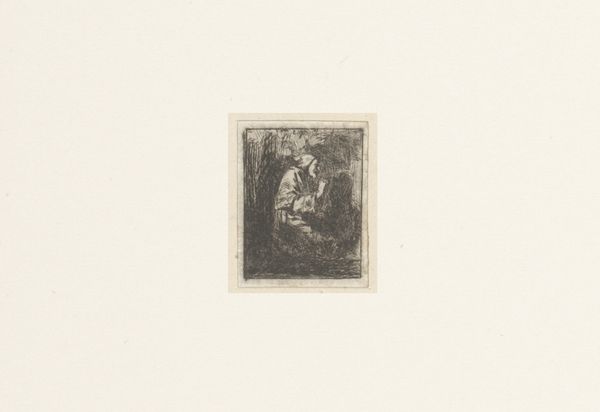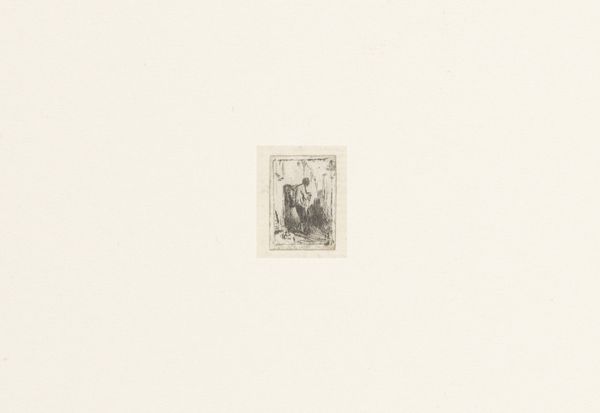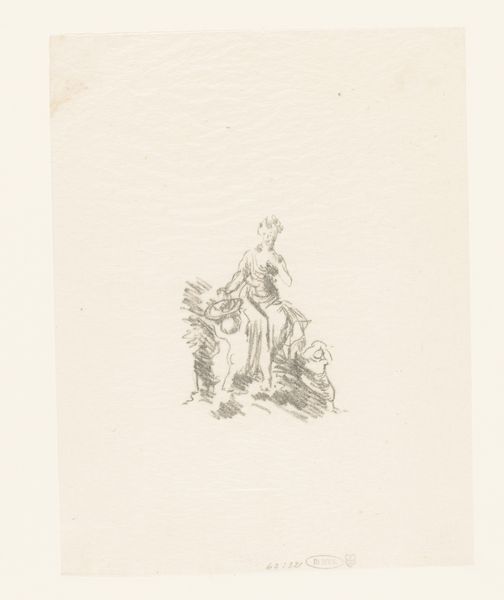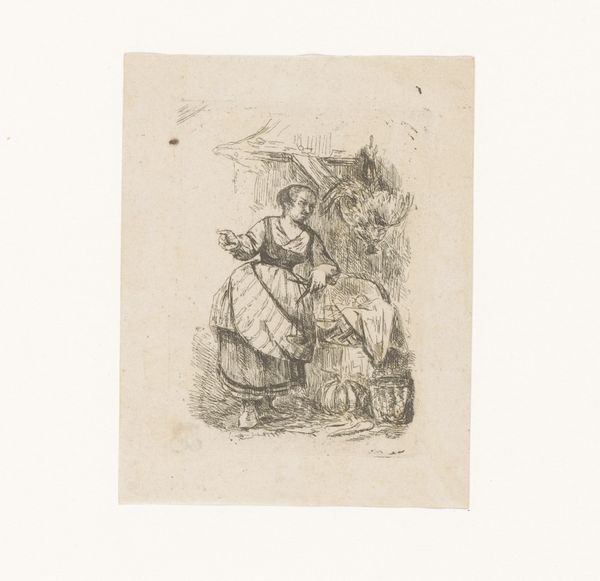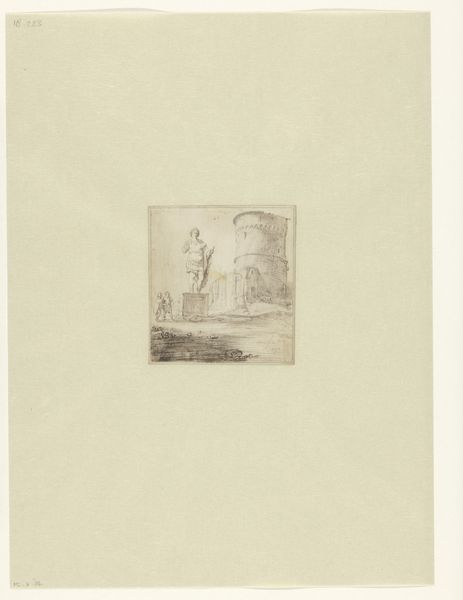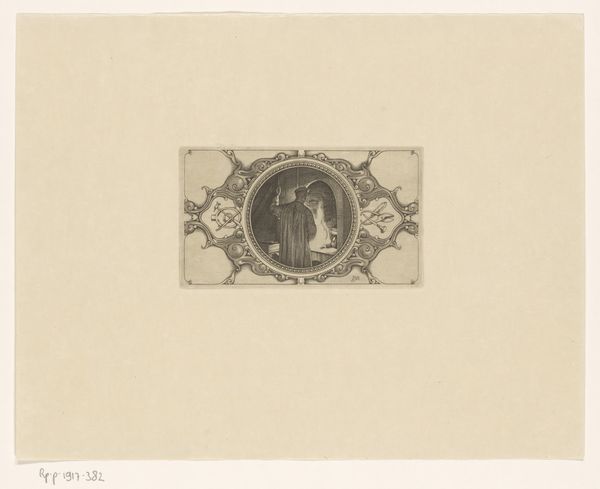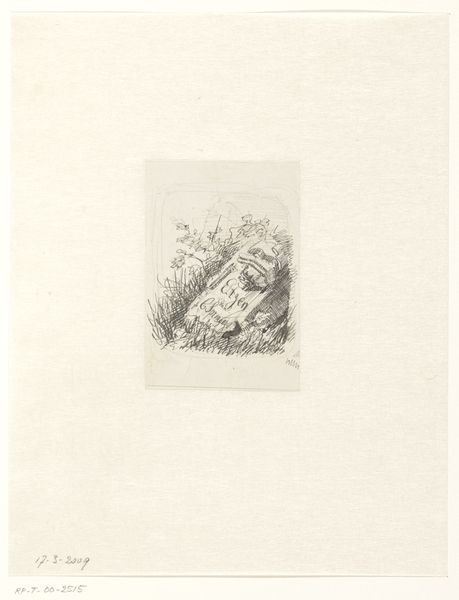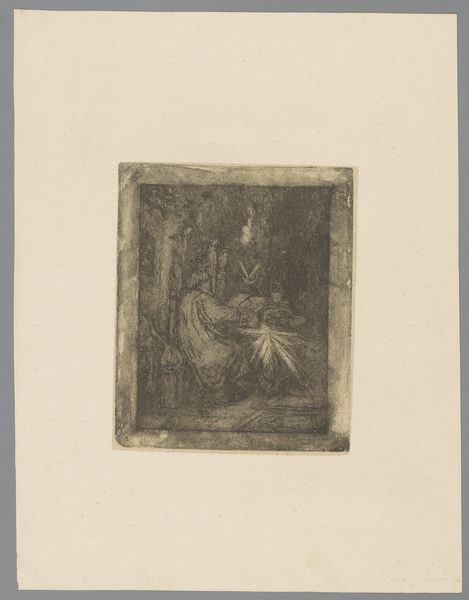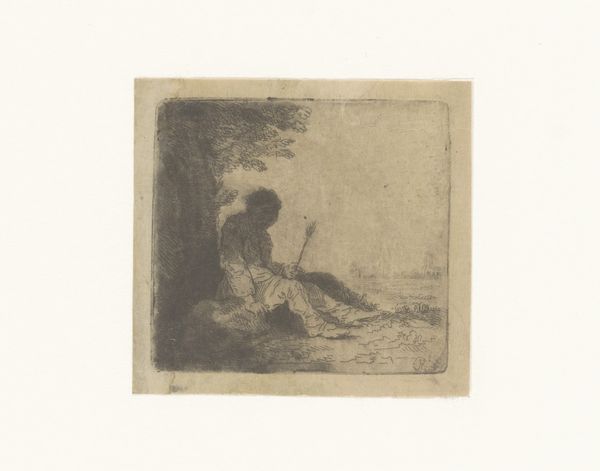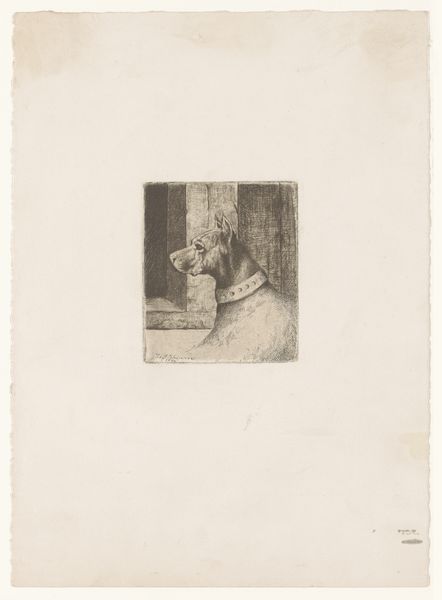
drawing, print, etching
#
drawing
# print
#
etching
#
landscape
#
genre-painting
#
realism
Dimensions: height 20 mm, width 14 mm
Copyright: Rijks Museum: Open Domain
Curator: We are looking at "Voddenraper," an etching created by Charles Jacque in 1843. My first impression is its somber tone, that heavy sack the figure is carrying looks arduous. Editor: Indeed. The figure, presumably the "voddenraper"—rag picker—is shown bent under the weight, but the piece itself invites us to consider broader systems of exploitation and class disparity that determined daily existence for many during this period. Curator: It is an etching, and Jacque uses this print medium in a way that almost romanticizes labor. Though there is undoubtedly a sense of hardship conveyed, the technique itself feels delicate. I wonder what choices underpinned the representation of someone experiencing poverty and to what audience these etchings circulated. Editor: Well, Jacque was aligned with the Realist movement, aiming to depict everyday life authentically. The etching as a medium made art accessible, moving away from the elite patronage systems and exposing audiences to the lives of urban laborers. But whose gaze are we seeing? Are we invited to empathize, or are we observing the "other"? Curator: It brings up interesting questions regarding representation and the artist’s intent. This piece forces us to think about visibility of labor—whose work is valued, whose isn't, and how art plays into perpetuating or challenging those ideas. Were such works intentionally meant to prompt critical reflections? Editor: I think so, or at least contribute to a dialogue. Genre scenes such as this offer a lens through which we can understand social conditions and spark reflection on inequalities then and now. By engaging with artwork like this, perhaps we might reimagine labor in ways that push for fair pay, decent conditions, and the acknowledgement of our interconnectedness. Curator: Thank you for the way you illuminate social history, highlighting not just what’s depicted but the political implications, particularly the social structures at play within the art world. Editor: It has been a pleasure, your sensitivity toward both art history and today is appreciated.
Comments
No comments
Be the first to comment and join the conversation on the ultimate creative platform.
